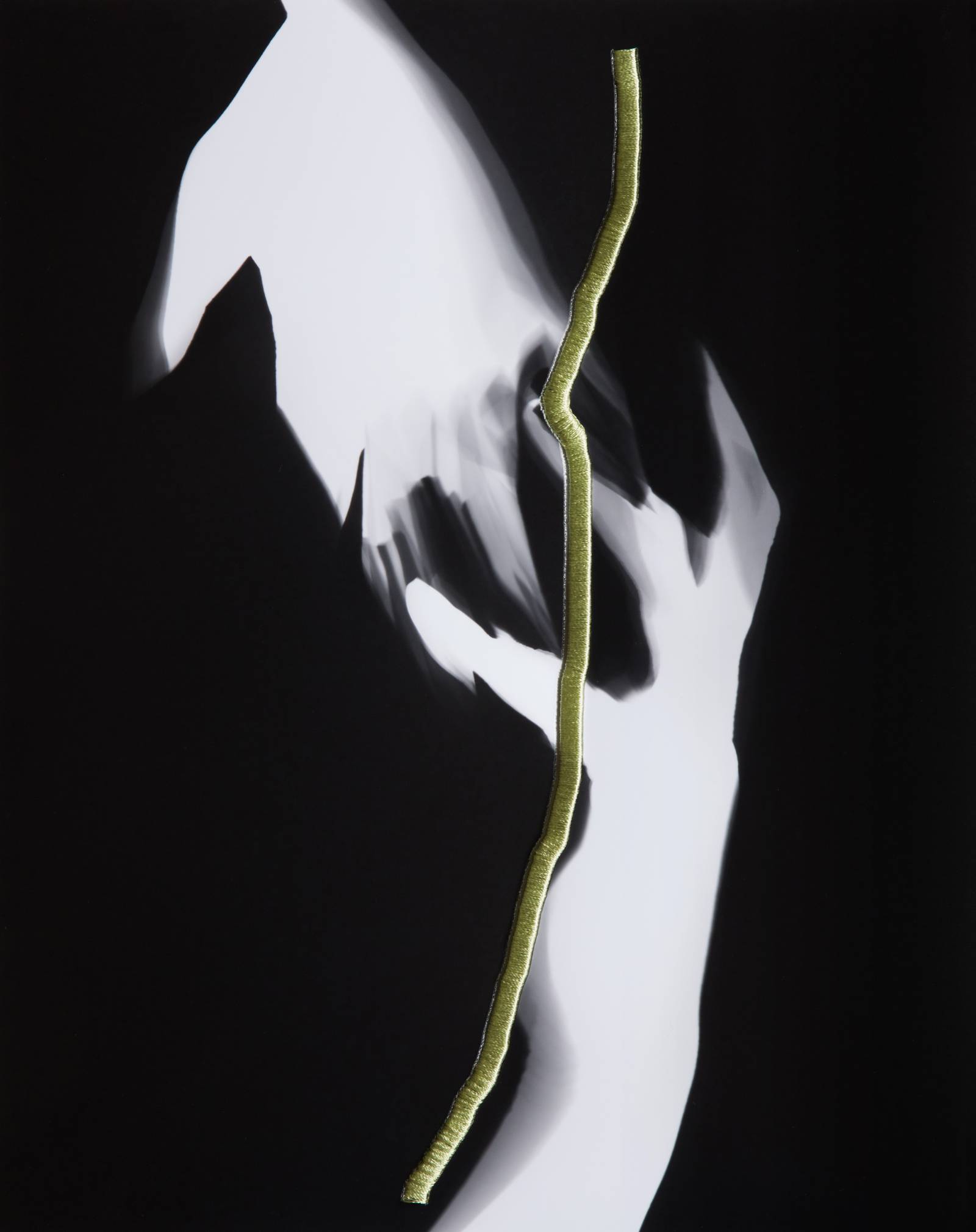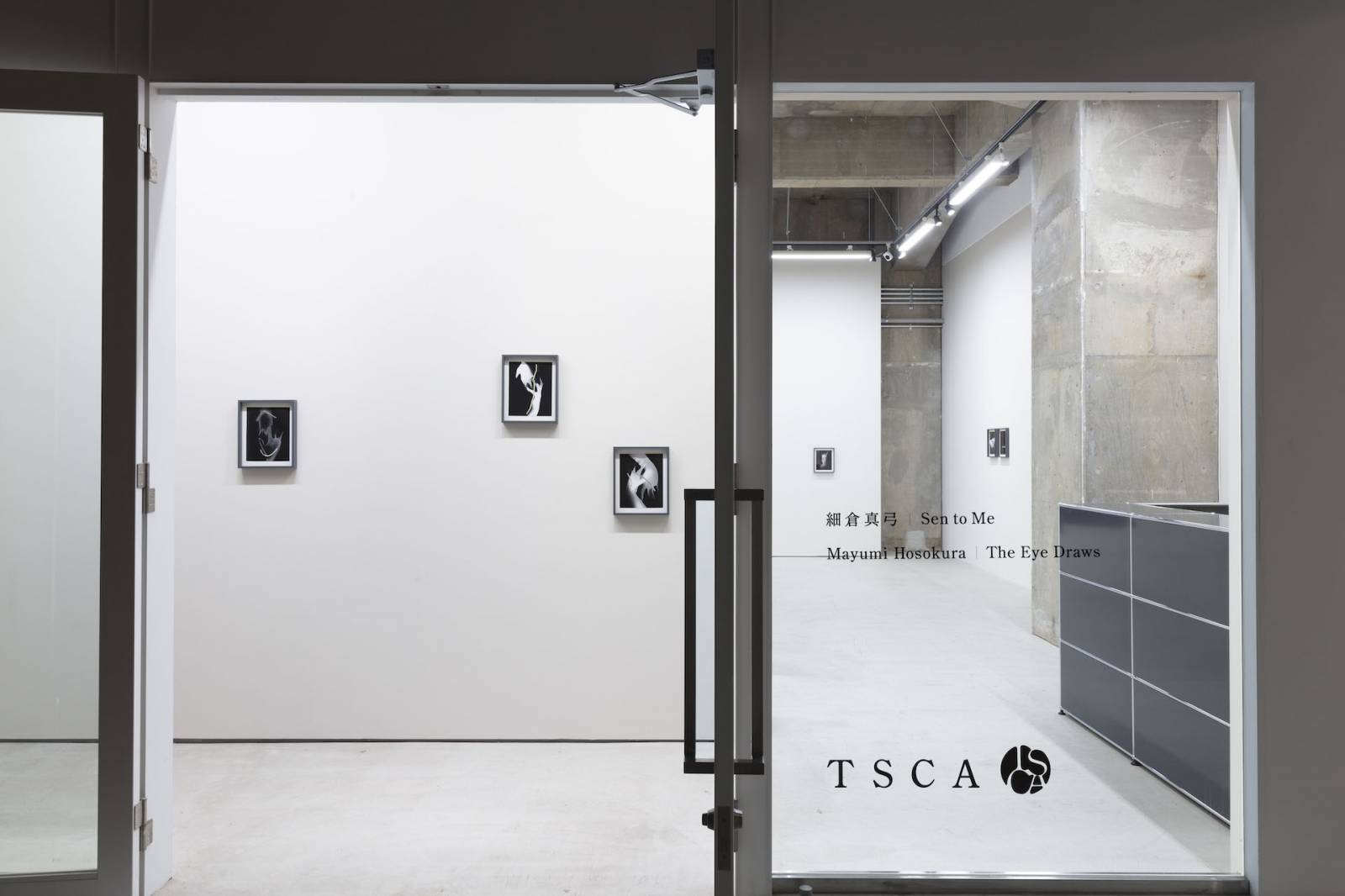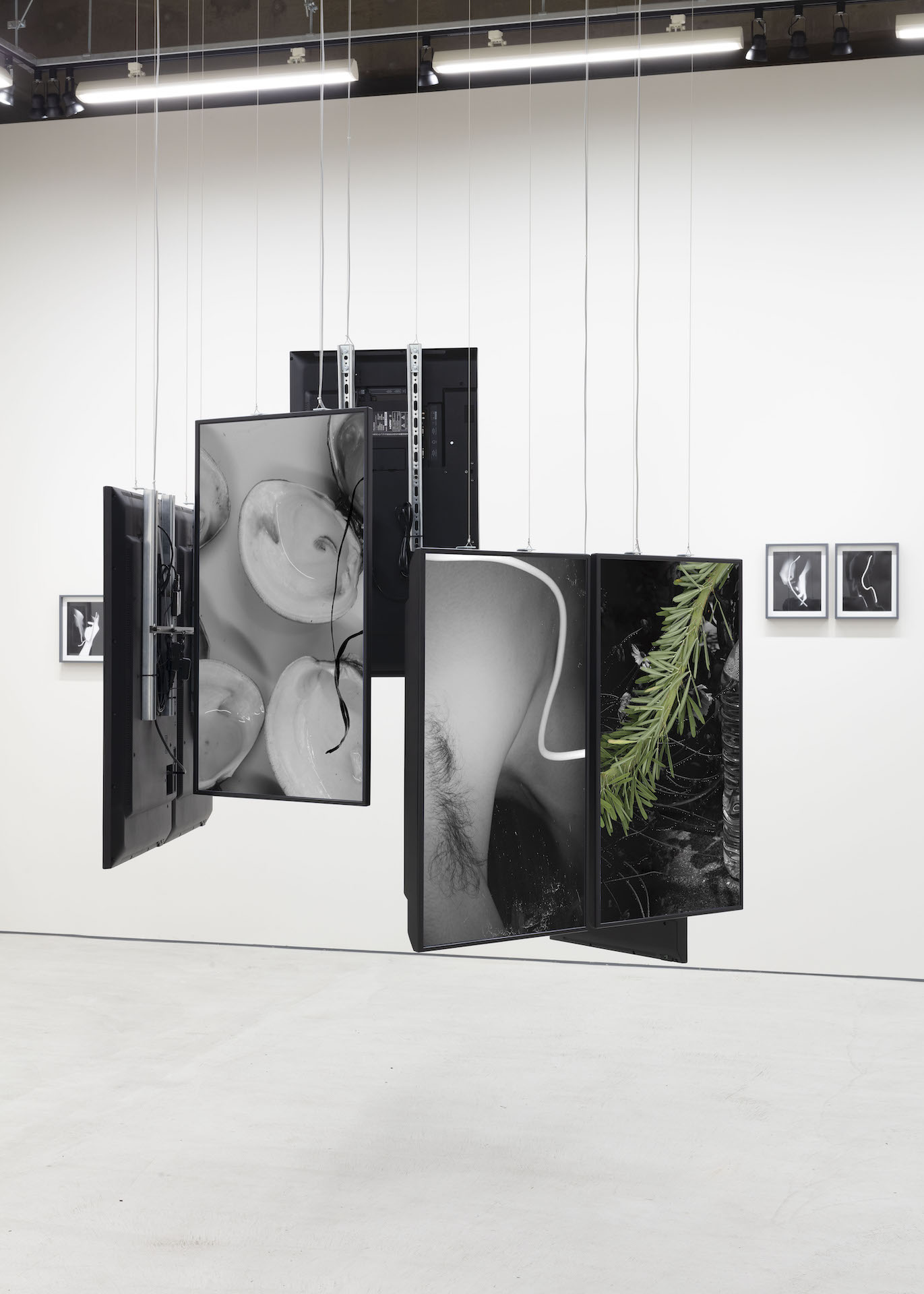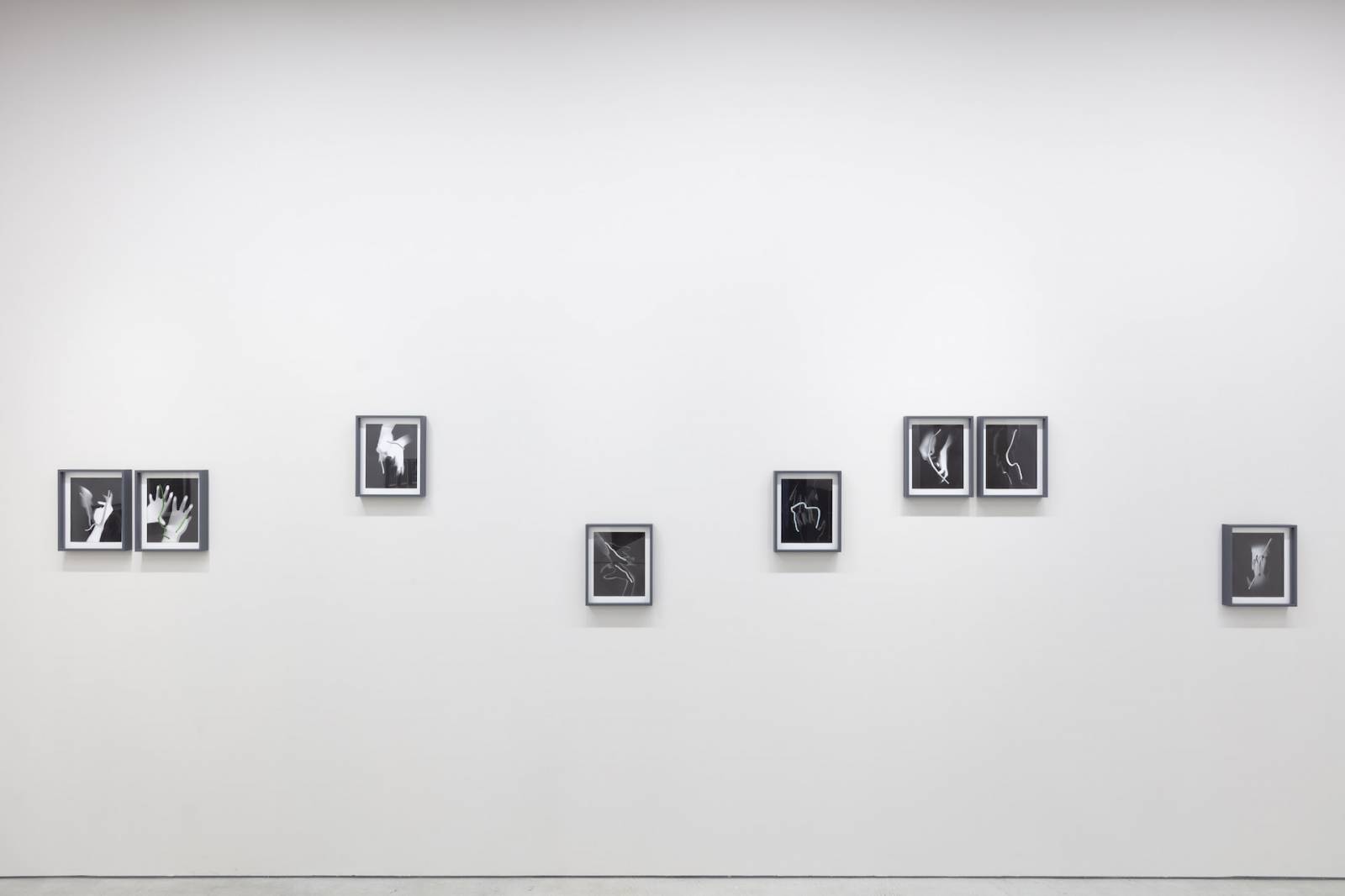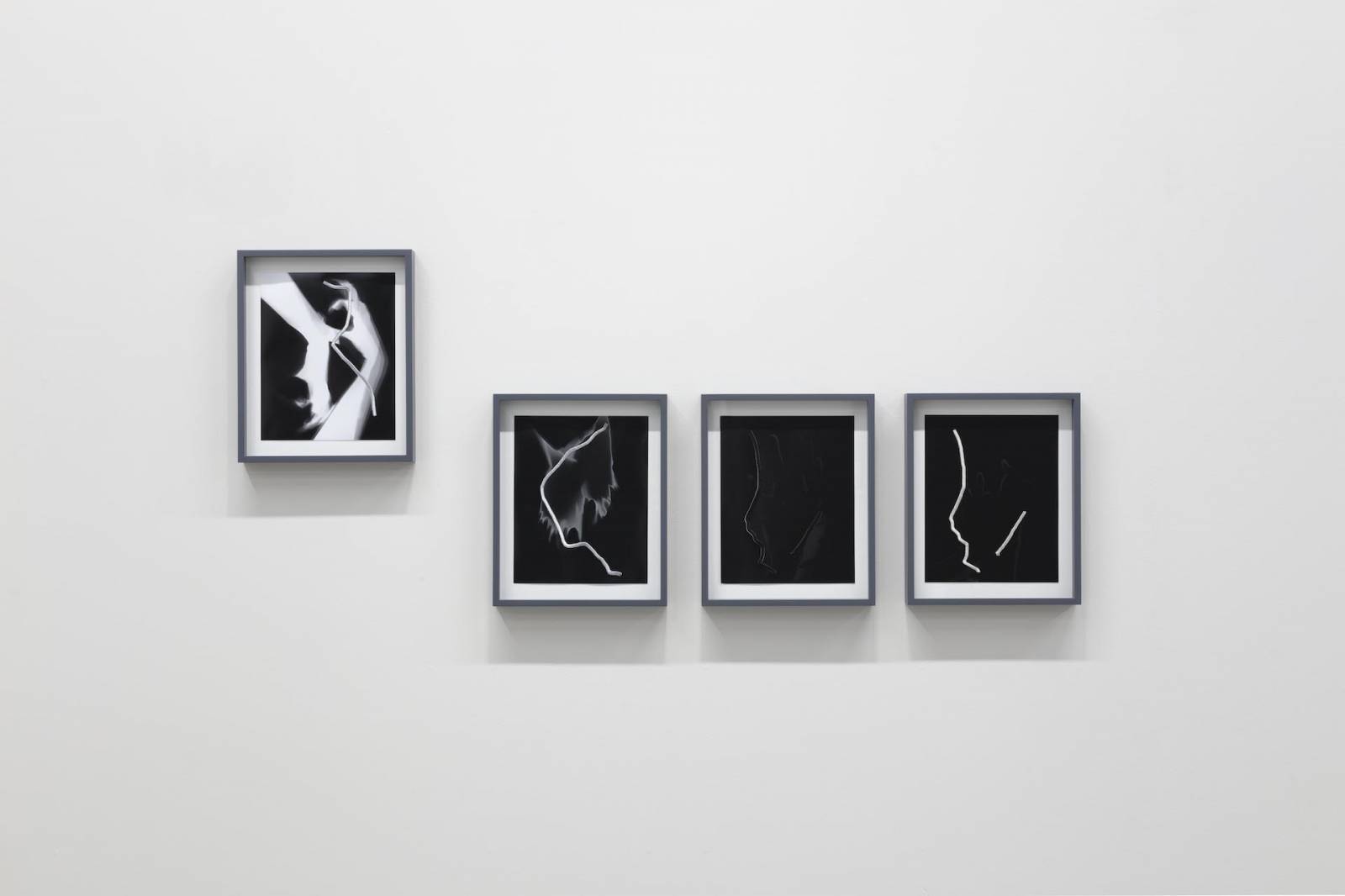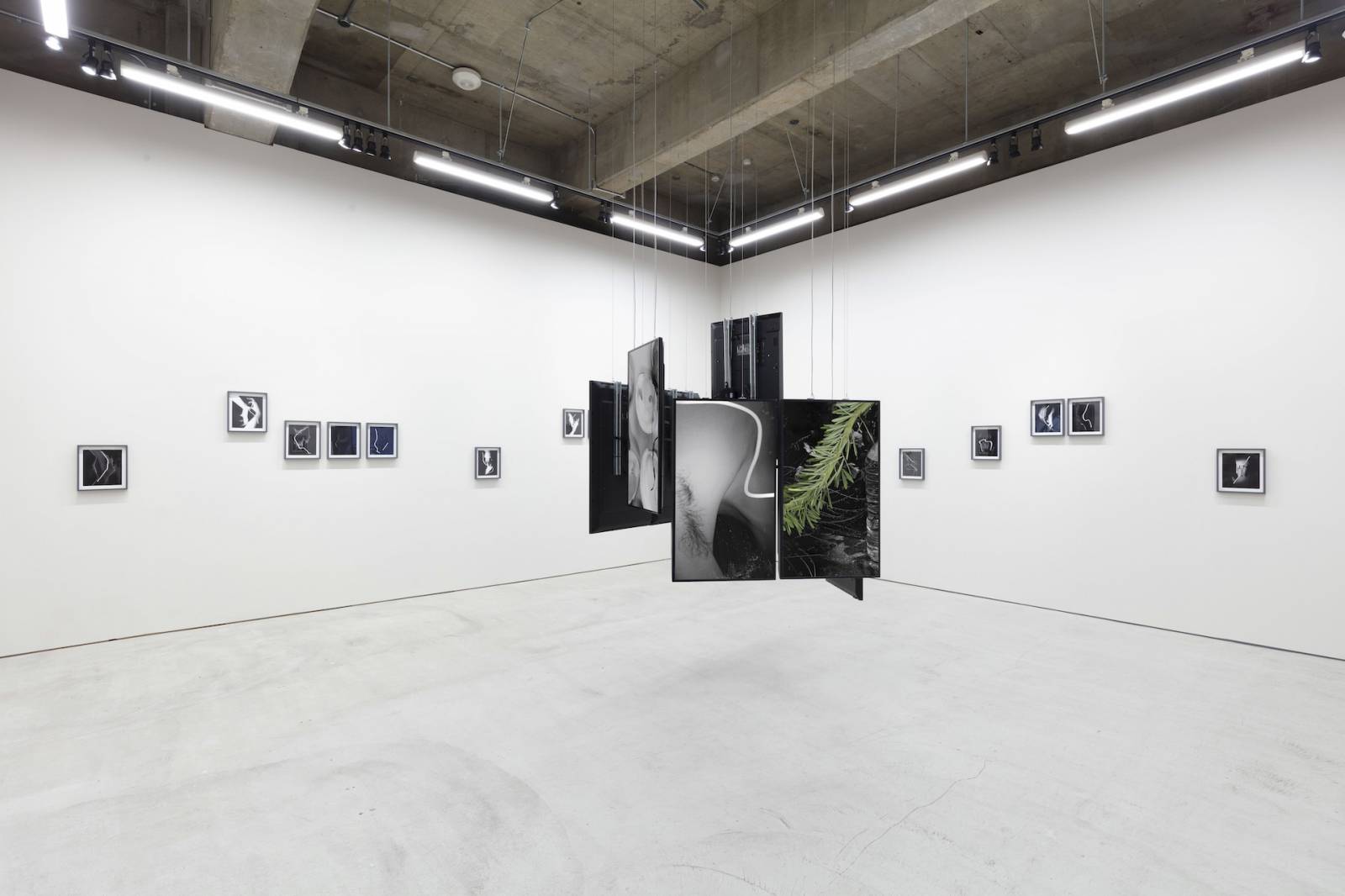The Eye Draws | Mayumi Hosokura
4 September - 23 October, 2021
Venue : Takuro Someya Contemporary Art
Takuro Someya Contemporary Art is pleased to announce Mayumi Hosokura’s upcoming solo exhibition The Eye Draws, opening on Saturday, September 4th.
This is Hosokura’s first solo exhibition at TSCA and follows the group exhibition Digitalis or the First-Person Camera, organized by Hosokura and held in April of this year. In The Eye Draws, Hosokura presents “digitalis,” a series of video works first shown in Digitalis or the First-Person Camera, as well as “Sen to Te,” a new series of photograms with machine embroidery.
Hosokura has, in recent years, been interested in creating works as a field of intersecting gazes. In “NEW SKIN,” presented in 2019, the artist layered photographs taken from various media into a digital collage, visualizing the multitude of gazes directed toward the male body.
In the two series comprising this exhibition, “digitalis” and “Sen to Te,” the collage and layering of photographs are simplified, presented as a device through which viewers may rediscover their own unique gaze.
“digitalis” is a series of video works in which the camera scrolls slowly across one giant image, a collage made up of photographs accumulated daily by the artist. The individual elements of the image reflect Hosokura’s perspective, but the slow – painfully slow – horizontal movement of the camera tempts the impatient viewer’s eye to wander. This work is neither a mere video nor a photograph, but rather a scroll across a still image that forces us to acknowledge our eyes’ inability to bear the slowness.
Hosokura’s new series “Sen to Te” consists of photogram prints with embroidery. In these works, Hosokura’s creative process, primarily digital in recent years, is moved into analog, physical space. The process for creating photograms does not require a camera and hence is sometimes referred to as “cameraless photography.” Photograms are made by placing objects onto light-sensitive paper and then shining light from above. The resulting shadows leave traces of white onto the paper, creating an image. This technique, which gently unravels the relationship between photographer and subject, is photography, defined as images created by light, in its most primitive form.
By exposing photographic paper to light for a certain period – for example, twenty or thirty seconds – the photogram technique makes it possible to preserve movement of the hand as a shadow in a single image. Hosokura uses the shadows of her own hands throughout this series, but she cannot see the shapes created until the exposure is complete. Thus, even as the artist’s hands move according to her own will, the resulting image is one of chance, beyond control.
Hosokura regards her photograms as something akin to “drawings of photographs.” The photogram technique reminds her of drawing in that the body’s movement becomes fixed onto the surface as a mark (or trace). And in the sense of making lines, drawing is also intimately tied to the questions of gaze and perspective explored in this exhibition.
In these works, a digital sewing machine is used to embroider onto the analog photograms. Photographic prints, or “photographs as objects,” are generally handled with extreme care for archival and exhibition purposes. Yet, in Hosokura’s “Sen to Te,” the embroidery needle is ruthless, puncturing countless holes into the prints. And while embroidery often brings the human hand – specifically, a woman’s hand – to mind, in this context, embroidery is dry and machine-generated.
The “Sen to Te” photograms overturn the conditions of their medium by taking a photograph, strongly associated with digital technology, and making it analog and unique, a one-of-a-kind work. And, conversely, it treats embroidery, which still feels deeply connected to the human hand, as digital data.
Hosokura says that the embroidered lines, created in collaboration with the vintage clothing store “OASIS II,” were intended to reproduce the movement of her eye when looking at the photograms in the production stage. Yet as the works progressed, the lines transformed into something preceding the eye’s movement – in other words, a sort of guide directing the gaze.
There is an element of uncertainty in Hosokura’s work, much like a sketch drawing, brought about by the lack of a definite subject, the presence of chance in the process of image-making, and collaboration with others.
Hosokura is drawn to the fact that even when people are looking at the same artwork, they may be seeing something entirely different depending on their perspectives. In The Eye Draws, Hosokura’s interest becomes the viewer’s experience, a space in which to look more closely at one’s own gaze.
The Eye Draws
The videos here are all very slow.
Even though we are looking at the same video, within the video’s slowness, the memory inside the viewer’s body feeds back to the video faster than the image itself. One video encompasses infinite individual experiences, and we watch together while carrying these separate experiences.
I am drawn to this solitary experience that cannot be shared with others.
On the other hand, the series of photograms with embroidery is a compression of this act.
The embroidery was a collaborative process with the vintage clothing store OASIS II. The embroidery is sometimes a result of what I think I saw, and other times, it is what OASIS II saw. Still other times, it is a vague mixture of the traces of our gazes.
At first glance, the embroidery sewn by machine onto the photographic paper might appear “the only way it could be.” But really, it’s not so solid. It’s an ambiguous thing, just one of the many possibilities of someone’s gaze.
To layer your own gaze over someone else’s, and as a result, be looking at something completely different. Does anything lie beyond this experience, sharing in the impossibility of understanding?
This is, for the past few years, where my interest has been.
— Mayumi Hosokura
Mayumi Hosokura
Lives in Tokyo and Kyoto.
Mayumi Hosokura’s haptically visual photography and video works address the shifting boundaries between body and sexuality, human and artificial, and organic and inorganic materials. She studied literature at the University of Ritsumeikan and photography at the Nihon University College of Art.
Major solo exhibitions include NEW SKIN, Mumei, Tokyo (2019), Jubilee, nomad nomad, Hong Kong (2017), Cyalium, G/P gallery, Tokyo (2016), CRYSTAL LOVE STARLIGHT, G/P gallery, Tokyo (2014), and Transparency is the new mystery, Kuandu Museum of Fine Arts, Taipei (2012).
Major group exhibitions include Digitalis or First-Person Camera | Umi Ishihara, Maiko Endo, Yokna Hasegawa, Mayumi Hosokura, Takuro Someya Contemporary Art, Tokyo (2021), The Body Electric, National Gallery of Art, National Gallery of Australia, Canberra (2020), Things So Faint But Real: Contemporary Japanese Photography vol. 15, Tokyo Photographic Art Museum, Tokyo (2018), Close to the Edge: New Photography from Japan, Miyako Yoshinage, New York (2016), Tokyo International Photography Festival, Art Factory Jonanjima, Tokyo (2015), and Reflected – Works from the Foam Collection, Foam Amsterdam, Amsterdam (2014).
Hosokura has published numerous photobooks, including Jubilee, artbeat publishers (2017), transparency is the new mystery, MACK (2016), FASHION EYE KYOTO by Mayumi Hosokura, LOUIS VUITTON (2021). Her work belongs to the public collection at Tokyo Photographic Art Museum, among others.
Web: http://hosokuramayumi.com/
The Eye Draws | Mayumi Hosokura
Exhibition Period: Saturday, September 4, 2021 – Saturday, October 23, 2021
Open: Tue – Sat 11:00 a.m. – 6:00 p.m.
Closed: Sun, Mon and National Holidays
Takuro Someya Contemporary Art
TSCA 3F TERRADA Art Complex 1-33-10 Higashi-Shinagawa Shinagawa-ku Tokyo 140-0002 Japan
TEL 03-6712-9887 |FAX 03-4578-0318 |E-MAIL: gallery@tsca.jp
________________
Our Commitment to Safety During COVID-19
In order to prevent the further spread of COVID-19, we will take the following actions:
- All visitors will be required to wear a mask upon entry into the gallery.
- All visitors will be asked to disinfect their hands with alcohol spray at the entrance.
- Entrance will be limited when needed to prevent overcrowding.
- We ask that anyone with the following symptoms refrain from visiting the gallery:
* Temperature over 37 degrees Celsius
* Cold symptoms (including fever, coughing, sneezing, sore throat)
* Strong fatigue or difficulty breathing
* Received a COVID-19 diagnosis or been in close recent contact with someone who has received a COVID-19 diagnosis
* Other concerns about their health
- Gallery staff will monitor their health and temperatures daily as well as take part in other preventative measures such as wearing masks while working.
- Please note that changing circumstances may require us to temporarily halt entrance or close the gallery. In the event of such a situation, we ask for your understanding and cooperation.


